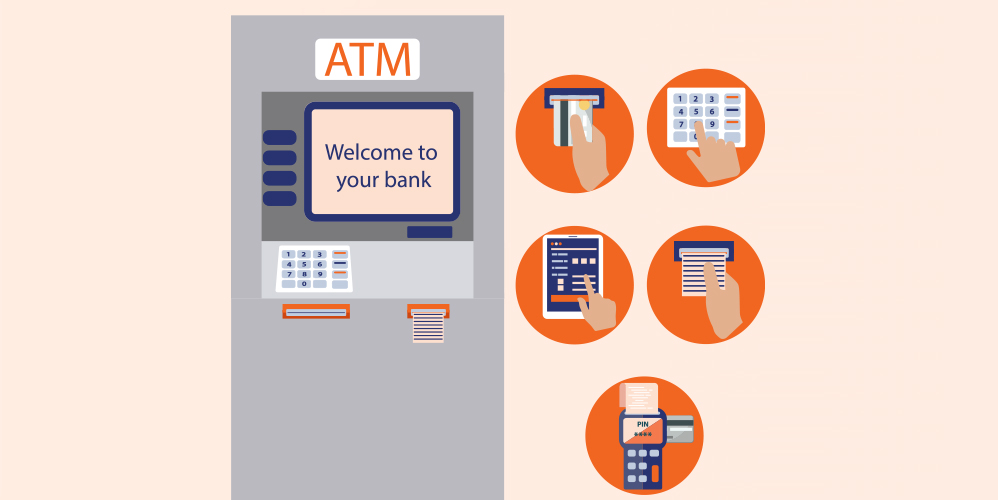
Understanding FOIR: Calculation, Significance & Impact on Loan Eligibility
21 Feb 2024

Table of Content
Introduction
Financial stability and responsible borrowing are crucial aspects of managing your personal finances. When you approach a bank or financial institution for a loan, they evaluate your financial health by assessing various factors, one of which is FOIR. In this blog, we will delve into what FOIR is, its significance, and how it is calculated. So, let's get started on this journey towards understanding this vital metric.
What is FOIR in Loan?
FOIR, or the Fixed Obligation to Income Ratio, also commonly referred to as the debt-to-income ratio, is a critical financial parameter used by banks and financial institutions to gauge a borrower's loan eligibility. In simple terms, it represents the portion of your monthly income that is earmarked for repaying existing loans and credit obligations. Lenders employ FOIR to determine whether applicants possess the financial capacity to repay a loan, taking into account their income and fixed monthly commitments, which may include taxes, provident funds, other existing loans, rent, and more. In their assessment, they meticulously analyze an individual's credit history, income sources, assets, and liabilities to assess their financial position and the associated risks associated with granting loans.
How to Calculate FOIR?
Now, let's explore how to calculate your FOIR systematically and straightforwardly.
The FOIR Calculation Formula is :
FOIR = (Total Monthly Loan Obligations / Gross Monthly Income) x 100
Here's a step-by-step breakdown of how to calculate your FOIR :
1. Calculate Total Monthly Loan Obligations :
To calculate this, you need to add up all your monthly financial commitments. This includes any existing loan EMIs , credit card payments, and other fixed financial obligations.
2. Calculate Gross Monthly Income :
Gross monthly income is your total monthly earnings before any deductions. This includes your salary, rental income, business income, or any other sources of income.
3. Apply the Formula :
Once you have both figures, insert them into the FOIR formula. Divide your total monthly loan obligations by your gross monthly income and multiply the result by 100 to get your FOIR percentage.
FOIR Calculation With Example: If your total monthly loan obligations amount to Rs. 20,000 and your gross monthly income is Rs. 50,000, your FOIR would be calculated as:
FOIR = (20,000 / 50,000) x 100 = 40%
Interpreting Your FOIR
Understanding your FOIR is essential as it helps you make informed financial decisions. Here's how to interpret your FOIR in banking:
1. A Low FOIR :
A FOIR below 40% is considered healthy and suggests that you have a manageable level of debt in proportion to your income. Banks are more likely to approve your loan application if your FOIR is low, as it indicates a higher capacity to repay.
2. A High FOIR :
If your FOIR exceeds 40%, it may raise concerns with lenders. A high FOIR implies that a significant portion of your income is already committed to repaying debts, leaving less room for additional financial commitments. This might make it challenging to secure new loans or credit cards.
3. The Ideal FOIR :
While 40% is the general benchmark, the ideal FOIR in personal loans may vary among lenders. Some may be more lenient, while others may require a lower FOIR for loan approval.
FOIR in finance serves as a fundamental factor for lenders when evaluating. Typically, a FOIR falling within the range of 40% to 55% is recommended. A moderate FOIR in personal loans indicates that the individual's net monthly obligations are substantially lower than their income, demonstrating a strong ability to repay. It signifies a responsible borrower with a higher disposable income and fewer financial commitments, thereby increasing their likelihood of loan approval.
Click here to apply for your personal loan now !
The Importance of FOIR Calculation in Loans
FOIR Calculation For Personal Loan plays a pivotal role in the loan approval process. It serves as a vital tool for both borrowers and lenders. Here's why it's crucial:
1. Risk Assessment :
For lenders, FOIR provides a comprehensive view of an applicant's financial situation. A higher FOIR indicates that a significant portion of the borrower's income is already allocated to existing obligations, which might increase the risk of default. A lower FOIR, on the other hand, implies a more manageable debt load and lower risk for the lender.
2. Responsible Borrowing :
For borrowers, understanding and maintaining a healthy FOIR promotes responsible financial behavior. It encourages individuals to avoid overextending themselves by taking on too much debt relative to their income, ultimately preventing financial stress.
3. Loan Eligibility :
FOIR in banking is a primary factor that lenders use to determine whether an applicant qualifies for a loan. A lower FOIR increases your chances of loan approval, while a high FOIR may lead to rejection or lower loan amounts.
4. Negotiating Power :
A good FOIR in finance can also give you an edge when negotiating loan terms. Lenders are more likely to offer favorable interest rates and terms to borrowers with a lower FOIR.
Also Read: How to Avoid Hidden Charges in Personal Loan
Tips to Improve Your FOIR
Maintaining a healthy FOIR is essential for securing loans and managing your finances effectively. Here are some tips to help you improve your FOIR:
• Pay Off Existing Debt :
Reducing existing loans and credit card balances can significantly lower your FOIR. Make extra payments when possible to clear your debts faster.
• Increase Your Income :
Finding additional sources of income or a higher-paying job can boost your gross monthly income, which, in turn, lowers your FOIR.
• Reduce Fixed Monthly Obligations :
If possible, consider reducing your fixed monthly obligations. This might involve relocating to a less expensive residence or refinancing loans to get better terms.
• Avoid New Loans :
Steer clear of taking on new loans or credit cards when your FOIR is already high. Wait until your existing obligations are more manageable.
How Lenders Calculate FOIR
Lenders use a straightforward formula to calculate FOIR, which we discussed earlier:
FOIR = (Total Monthly Loan Obligations / Gross Monthly Income) x 100
Lenders assess your total monthly loan obligations, which include existing loan EMIs, credit card payments, and other fixed financial commitments. They then calculate your gross monthly income, which encompasses all sources of income, such as salary, rental income, and business earnings. By applying this formula, they determine your FOIR in loan, allowing them to make informed decisions about your loan application.
Conclusion
Understanding and managing your Fixed Obligations to Income Ratio (FOIR) is an essential aspect of responsible financial management, particularly when seeking loans in India. A healthy FOIR in loans not only increases your eligibility for loans but also promotes financial discipline and stability. By paying off existing debts, increasing your income, and being mindful of your financial commitments, you can work towards maintaining a favorable FOIR, setting yourself on a path to financial success and greater financial flexibility. In conclusion, a well-maintained FOIR not only benefits lenders but also empowers borrowers to make wise financial choices and build a secure financial future.
Also Read: Personal Loan Processing fee and Charges
Popular Articles
Tag Clouds
Related Articles


The Importance of Pension Funds: Secure Your Future with Steady Retirement Income








-
Disclaimer
The contents of this article/infographic/picture/video are meant solely for information purposes and do not necessarily reflect the views of Bank of Baroda. The contents are generic in nature and for informational purposes only. It is not a substitute for specific advice in your own circumstances. Bank of Baroda and/ or its Affiliates and its subsidiaries make no representation as to the accuracy; completeness or reliability of any information contained herein or otherwise provided and hereby disclaim any liability with regard to the same. The information is subject to updation, completion, revision, verification and amendment and the same may change materially. The information is not intended for distribution or use by any person in any jurisdiction where such distribution or use would be contrary to law or regulation or would subject Bank of Baroda or its affiliates to any licensing or registration requirements. Bank of Baroda shall not be responsible for any direct/indirect loss or liability incurred by the reader for taking any financial decisions based on the contents and information mentioned. Please consult your financial advisor before making any financial decision.
Personal Loans for Travel-Financing Your Dream Vacation Responsibly
Do you dream of exploring the world, but your bank account isn't quite ready to support your wanderlust? Don't worry, you're not alone. Many people face financial constraints when it comes to embarking on their dream vacations. Fortunately, personal loans for travel offer a viable solution, enabling you to transform your travel aspirations into a reality. In this blog, we'll dive deep into the realm of travel loans, uncovering why they are an astute choice, gaining insights into the various types available, and discovering how to select the right one tailored to your needs.
A Complete Guide to Get a Loan Against an FD
It's simple to borrow money against a fixed deposit to get quick access to cash. In addition, you have the option of borrowing a loan against an FD as opposed to losing all or a portion of your investment. The Bank of Baroda loan against the FD program allows you to borrow up to 90% of the overdraft on your loan. The only amount that must be repaid is the original loan amount plus interest.


Leave a Comment
Thanks for submitting your details.